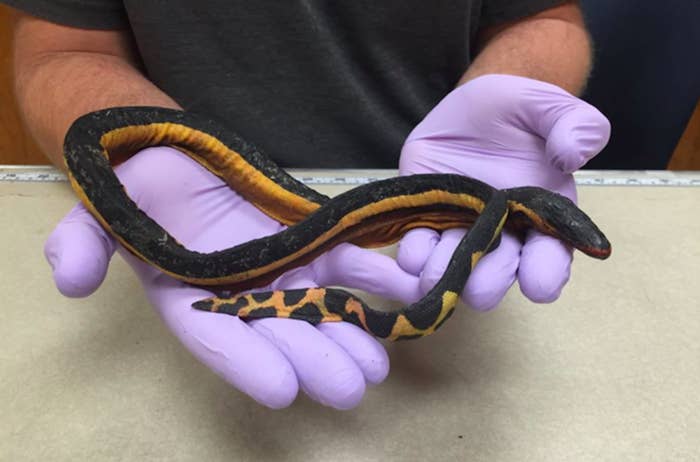
A third highly venomous sea snake has washed ashore in California far from its typically tropical habitat, the latest sign that warming Pacific waters associated with El Niño are delivering more than just much-needed rainfall to the parched state.
The latest yellow-bellied sea snake turned up Tuesday on Coronado's North Beach near Naval Air Station North Island after someone brought it to the attention of lifeguards, who placed it in a bucket. The 20-inch-long snake died shortly afterward, according to a statement from the city.
The snakes are among the most highly venomous in the world and can swim underwater for up to 90 minutes. But they pose only limited danger to humans, since they can't open their jaws very wide.

The carcass of a 27-inch-long male yellow-bellied sea snake was discovered Dec. 18 during a coastal cleanup near Huntington Beach. Another was spotted alive on Silver Strand Beach in October, but died soon after being taken to a U.S. Fish and Wildlife Service facility.
With the find in Coronado, there have now been six recorded yellow-bellied snakes along the Pacific coast of Baja and California since the 1970s.
Experts say the snakes have wandered farther north because they've been able to withstand the warmer Pacific waters brought on by El Niño.
Greg Pauly, a herpetologist at the Natural History Museum of Los Angeles County, has previously noted that all the other yellow-bellied snakes found along California's coast have been found during El Niño years.
He told the New York Times, though, that once the snakes get so far north, they encounter conditions that end up being just a little too harsh.
"They’re experiencing temperatures that are at the bottom end of what they can tolerate and they’re not foraging or finding food very effectively," Pauly said.
